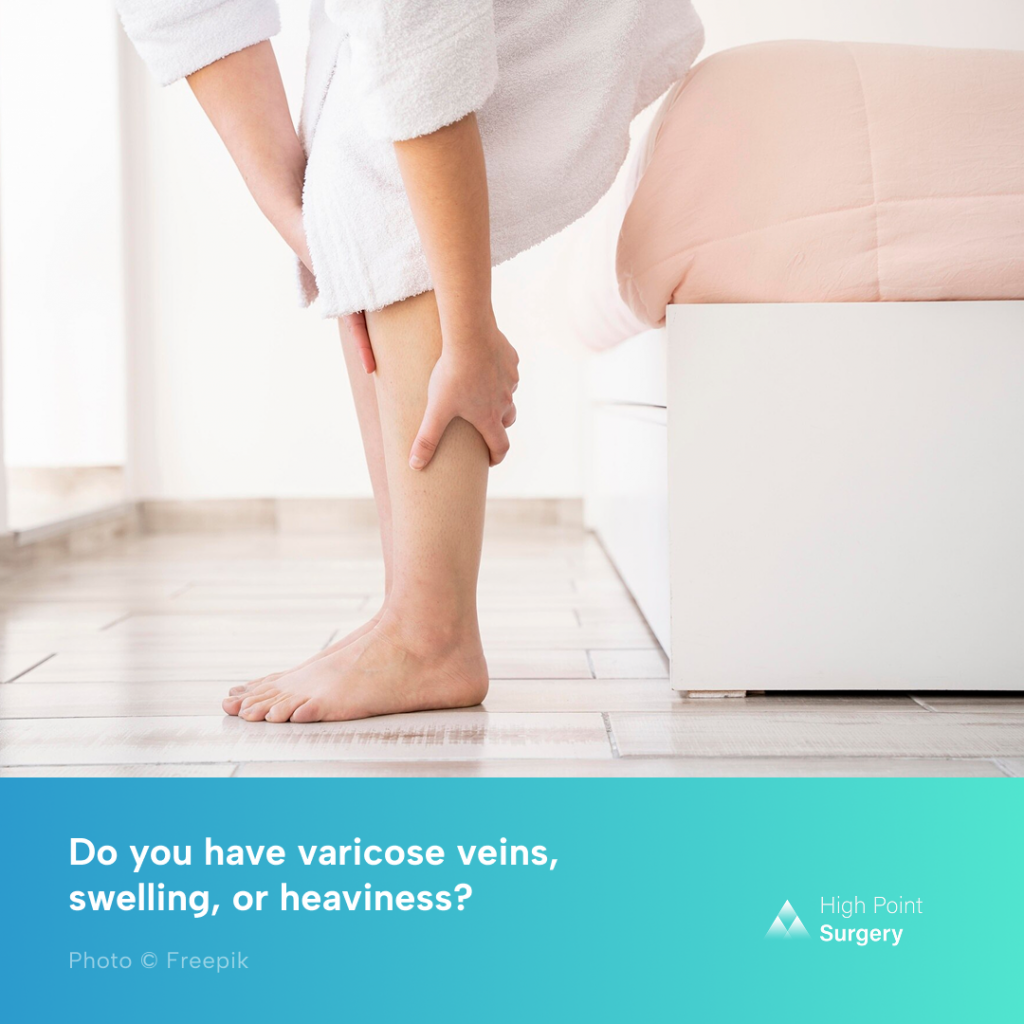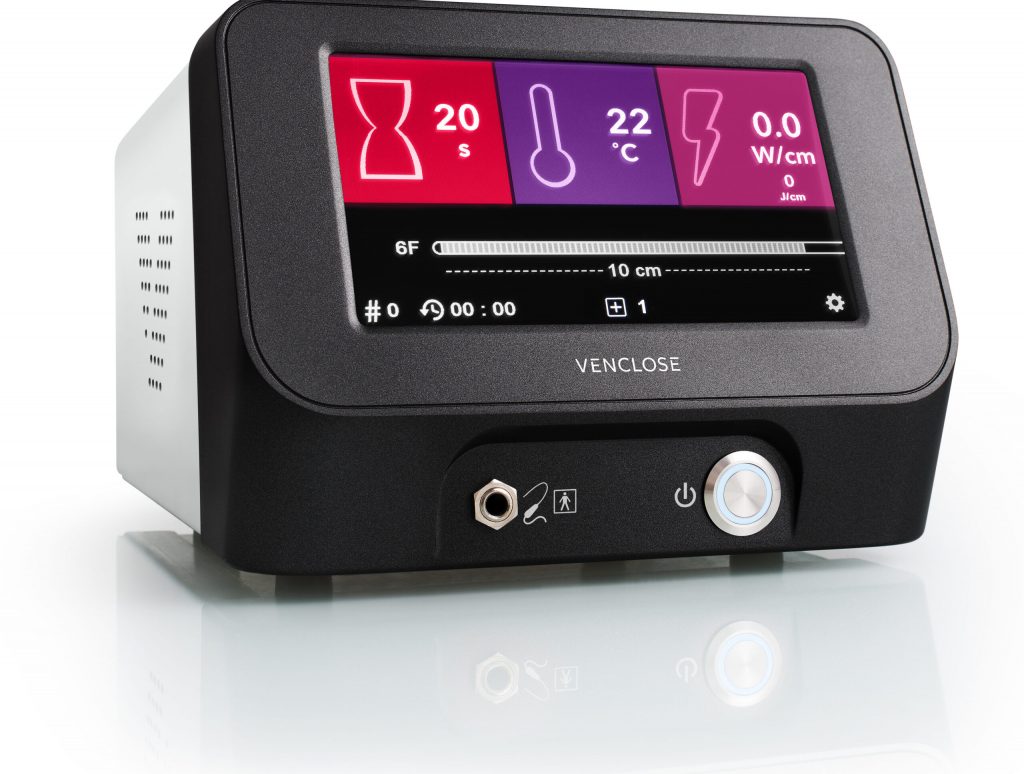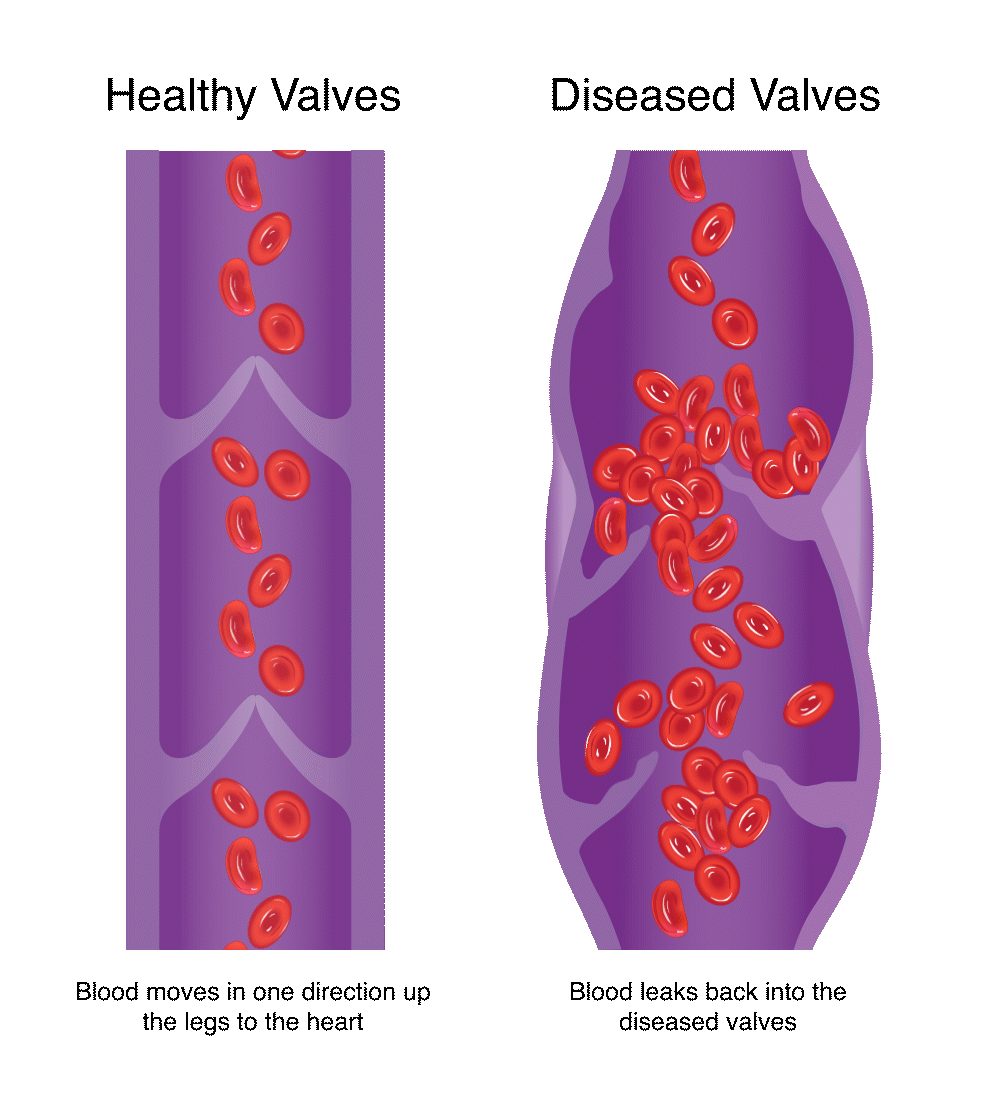Help Restore Your Leg Health
With Venclose® RF Ablation System

Ready to relieve that unwanted leg pain and have great-looking legs again? Fill out the form below:
Find Relief
Talk to your physician to learn more about your chronic vein disease treatment options.
The Venclose™ System leverages radiofrequency (RF) technology that’s been established as a CVD treatment option for more than 20 years.
· Minimally invasive, outpatient procedure
· Small catheter entry site
· Primary treatment choice for physicians

What People Are Saying
Watch the video to learn how it works
Learn how the Venclose RF Ablation system can help alleviate painful varicose veins and get your life back!
FAQ For Varicose Vein Treatment
General FAQs:
- Patients must schedule an initial visit with the provider to evaluate their condition.
- You will undergo ultrasound imaging to document disease and be fitted for compression stockings as required by insurance guidelines.
- If you don’t improve you will meet with your surgeon to discuss the procedure and be scheduled.
- You will undergo the 30 minutes procedure in office under ultrasound guidance and go home after.
- You will have a follow-up ultrasound visit with your surgeon one to two weeks after the procedure to check your progress.
- Varicose veins or spider veins
- Heaviness, aching, or fatigue in the legs
- Pain, swelling, or discomfort
- Skin changes, restlessness, or cramping
- Numbness or itching
- Leg ulcers or wounds
- This is a minimally invasive, outpatient treatment using radiofrequency (RF) technology to close diseased veins.
- A small catheter is inserted into the vein, delivering heat to shrink and seal it.
- The procedure is typically faster and may reduce post-operative pain and bruising compared to other treatments like vein stripping or laser therapy.
- Minimally invasive with no large incisions
- Quick recovery time (most patients can resume normal activities within a few days)
- Effective treatment for chronic venous disease (CVD) symptoms
Potential risks include:
- Vessel wall puncture
- Skin discoloration
- Nerve injury or temporary abnormal sensations
- Blood clots or vein inflammation
- Infection or skin burns Please discuss any concerns with the surgeon during your consultation.
Please call our office at 970-497-7925 to schedule an appointment.
If that is the case its best to schedule an appointment with the surgeon and they will be able to answer your questions.
Pre-Treatment Requirements:
Insurance providers typically require patients to use compression stockings to see if symptoms improve before approving advanced treatments.
The surgeon will recommend the next steps, including the RF ablation procedure.
Post-Treatment Requirements:
- Most patients experience minimal discomfort and can resume normal activities within a few days.
- You will have a follow-up appointment with the surgeon to monitor your recovery.
- Most insurance plans cover RF ablation for venous disease. However, preauthorization steps are often required.
- Our office staff will work with you and your insurance provider to confirm coverage.
Download the Brochure to Learn More

Post-Operative Care
Immediately After the Procedure
- Compression Bandages or Stockings:
- Compression stockings are usually applied immediately after the procedure to reduce swelling, improve blood flow, and minimize the risk of clotting.
- Patients are often instructed to wear these for 1-2 weeks, depending on the physician’s recommendation.
- Activity:
- Encouraged Walking: Patients are usually encouraged to walk for 10-15 minutes immediately after the procedure and several times daily for the first few weeks. This promotes circulation and prevents blood clots.
- Avoid Prolonged Sitting or Standing: Patients should avoid sitting or standing in one position for extended periods during the recovery period.
- Pain Management:
- Mild discomfort, bruising, or tenderness along the treated vein is common. Over-the-counter pain relievers like ibuprofen or acetaminophen are usually sufficient.
- Patients should avoid medications that increase bleeding risk, like aspirin, unless prescribed.
- Dressings:
- Keep the bandages or dressings clean and dry for the first 24-48 hours, or as instructed by the doctor.
1-2 Weeks Post-Procedure
- Compression Stockings:
- Continue wearing compression stockings during the day for 1-2 weeks, or longer if advised.
- Remove stockings while sleeping unless otherwise directed.
- Physical Activity:
- Resume light to moderate activities but avoid strenuous exercise, heavy lifting, or high-impact activities for at least 1-2 weeks.
- Daily walking remains important for circulation.
- Wound Care:
- Patients can usually shower after 24-48 hours, but avoid soaking the treated area in water (e.g., baths, pools, or hot tubs) for at least a week.
- Avoiding Heat:
- Refrain from applying heat (e.g., heating pads, hot baths) to the treated area, as this can increase swelling and delay healing.
Follow-Up Care
- Ultrasound Examination:
- A follow-up ultrasound is typically scheduled within 1-2 weeks post-procedure to ensure the vein has closed properly and to rule out complications like deep vein thrombosis (DVT).
- Monitoring for Complications:
- Watch for signs of complications, such as:
- Severe pain or swelling in the leg.
- Redness, warmth, or tenderness along the vein path.
- Fever or chills.
- Sudden difficulty breathing (requires immediate medical attention, as it could indicate a pulmonary embolism).
- Watch for signs of complications, such as:
Long-Term Care
- Lifestyle Adjustments:
- Maintain a healthy weight, stay active, and avoid smoking to promote venous health.
- Elevate legs periodically to reduce swelling and improve circulation.
- Additional Treatments:
- In some cases, additional RF ablation sessions or complementary treatments (e.g., sclerotherapy for residual veins) may be needed.
- Cosmetic Considerations:
- Bruising and skin discoloration near the treated vein usually resolve within a few weeks to months.
- Preventing Recurrence:
- Follow the healthcare provider’s advice to prevent new varicose veins, including regular use of compression stockings if recommended.
When to Contact a Doctor
Contact your healthcare provider if you experience any of the following:
- Persistent or worsening pain.
- Signs of infection (redness, warmth, pus).
- Severe swelling, discoloration, or loss of sensation in the leg.
- Sudden shortness of breath or chest pain.
Proper adherence to post-operative care instructions is crucial for optimal outcomes and faster recovery. Always follow your healthcare provider’s specific advice tailored to your condition.
